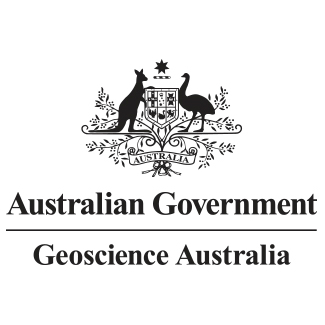Full description
The Vegetation Structure classes dataset was derived from Vegetation Height Model (VHM) and Fractional Cover Model (FCM) LiDAR products. The National Vegetation Information System framework was used to classify vegetation height and canopy/cover density into (sub-)stratum, growth forms, and structural formation classes. The classifications contain descriptions and spatial extents of the vegetation types for the East Kimberley LiDAR survey area. The displayed classifications include 19 dominant structural formation classes, and 43 dominant sub-structural formation classes for lower-, mid-, and upper stratum.High resolution LiDAR imagery, including Digital Elevation Model (DEM), Canopy Height Model (CHM), Vegetation Height Model (VHM), Vegetation Cover Model (VCM) and Fractional Cover Model (FCM) surfaces were acquired for the East Kimberley area in June 2017. All the data were released in 2019 (Geoscience Australia, 2019).
For the purposes of vegetation structure mapping, the two input datasets were resampled, classified and combined to produce a vegetation structure map for the East Kimberley area. The methods are described by Lawrie et al. (2012), with the following differences:
• resampling used Focal Statistic Min in ArcGIS as it more accurately represented vegetation extent
• VHM was used instead of CHM as CHM did not include low vegetation (i.e ground cover).
• VHM and FCM were classified into height and foliage cover classes using the Australian Vegetation Attribute Manual (NVIS Technical Working Group, 2017).
Authors acknowledge the tremendous work of the Geoscience Australia Elevation team who carried out post processing, classification, production, quality assurance and delivery of all released LiDAR data products (see Geoscience Australia, 2019). In particular, the authors thank Graham Hammond, Kevin Kennedy, Jonathan Weales, Grahaem Chiles, Robert Kay, Shane Crossman, and Simon Costelloe.
Geoscience Australia, 2019. Kimberley East - LiDAR data. Geoscience Australia, Canberra. C7FDA017-80B2-4F98-8147-4D3E4DF595A2 https://pid.geoscience.gov.au/dataset/ga/129985
Lawrie, K.C., Brodie, R.S., Tan, K.P., Gibson, D., Magee, J., Clarke, J.D.A., Halas, L., Gow, L., Somerville, P., Apps, H.E., Christensen, N.B., Brodie, R.C., Abraham, J., Smith, M., Page, D., Dillon, P., Vanderzalm, J., Miotlinski, K., Hostetler, S., Davis, A., Ley-Cooper, A.Y., Schoning, G., Barry, K. and Levett, K. 2012. BHMAR Project: Data Acquisition, processing, analysis and interpretation methods. Geoscience Australia Record 2012/11. 826p.
NVIS Technical Working Group. 2017 Chapter 4.0 NVIS attributes listed and described in detail. In: Australian Vegetation Attribute Manual: National. Vegetation Information System, Version 7.0. Department of the Environment and Energy, Canberra. Prep by Bolton, M.P., deLacey, C. and Bossard, K.B. (Eds).
Lineage
Maintenance and Update Frequency: notPlannedNotes
PurposeGIS dataset to use for vegetation and groundwater studies as part of the EFTF Program
Issued: 16 06 2020
Data time period: 2017-06-09 to 2017-06-15
text: westlimit=128.35; southlimit=-15.96; eastlimit=129.41; northlimit=-14.89
User Contributed Tags
Login to tag this record with meaningful keywords to make it easier to discover
Data package [159.2 MB]
uri :
https://d28rz98at9flks.cloudfront.net/134101/134101_00_0.zip![]()
East Kimberley Remotely Sensed Products WMS
uri :
https://services.ga.gov.au/gis/groundwater-grids/ek-raster/wms![]()
East Kimberley Remotely Sensed Products WMTS
uri :
https://services.ga.gov.au/gis/groundwater-grids/ek-raster/gwc/service/wmts![]()
East Kimberley Remotely Sensed Products WCS
uri :
https://services.ga.gov.au/gis/groundwater-grids/ek-raster/wcs![]()
Application of high resolution LiDAR data for hydrogeological investigations
local : 134627
Kimberley East - LiDAR data
local : 129985
East Kimberley Remotely Sensed Products WMS
local : 140105
East Kimberley Remotely Sensed Products WMTS
local : 140106
East Kimberley Remotely Sensed Products WCS
local : 140107
- global : 0c038457-7c96-4393-b3c3-eb6b29d89001
- Local : pid.geoscience.gov.au/dataset/ga/134101
- DOI : 10.26186/134101



